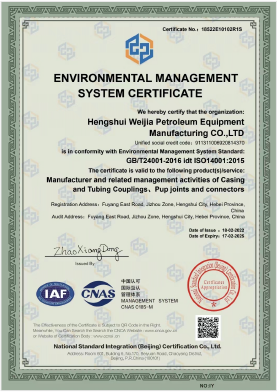- Afrikaans
- Albanian
- Amharic
- Arabic
- Armenian
- Azerbaijani
- Basque
- Belarusian
- Bengali
- Bosnian
- Bulgarian
- Catalan
- Cebuano
- Corsican
- Croatian
- Czech
- Danish
- Dutch
- English
- Esperanto
- Estonian
- Finnish
- French
- Frisian
- Galician
- Georgian
- German
- Greek
- Gujarati
- Haitian Creole
- hausa
- hawaiian
- Hebrew
- Hindi
- Miao
- Hungarian
- Icelandic
- igbo
- Indonesian
- irish
- Italian
- Japanese
- Javanese
- Kannada
- kazakh
- Khmer
- Rwandese
- Korean
- Kurdish
- Kyrgyz
- Lao
- Latin
- Latvian
- Lithuanian
- Luxembourgish
- Macedonian
- Malgashi
- Malay
- Malayalam
- Maltese
- Maori
- Marathi
- Mongolian
- Myanmar
- Nepali
- Norwegian
- Norwegian
- Occitan
- Pashto
- Persian
- Polish
- Portuguese
- Punjabi
- Romanian
- Russian
- Samoan
- Scottish Gaelic
- Serbian
- Sesotho
- Shona
- Sindhi
- Sinhala
- Slovak
- Slovenian
- Somali
- Spanish
- Sundanese
- Swahili
- Swedish
- Tagalog
- Tajik
- Tamil
- Tatar
- Telugu
- Thai
- Turkish
- Turkmen
- Ukrainian
- Urdu
- Uighur
- Uzbek
- Vietnamese
- Welsh
- Bantu
- Yiddish
- Yoruba
- Zulu
Exploring the Functionality of Pump Seating Nipples in Fluid Systems
Understanding Pump Seating Nipples A Key Component in Pump Systems
Pump seating nipples play a crucial role in various industrial applications, particularly in oil and gas production, water management, and other fluid transport systems. As essential components of pump installation and operation, seating nipples ensure the efficient functioning and longevity of pumping systems. In this article, we will explore the purpose, design, and maintenance of pump seating nipples, emphasizing their importance in maintaining optimal performance in pumping operations.
What is a Pump Seating Nipple?
At its core, a pump seating nipple serves as an interface between the pump and the tubing or casing in which it operates. Typically installed within wells, these components are designed to securely support the pump while allowing for efficient fluid flow. Their primary functions include providing a stable seating surface for the pump and ensuring the alignment necessary for effective operation. The design of a seating nipple is integral to its performance, with specific features that facilitate the correct positioning and sealing of pumps.
Design and Functionality
Pump seating nipples vary in design based on the specific requirements of a given application, including factors such as well depth, pressure, and the nature of the fluids being pumped. Common materials used in the construction of these nipples include stainless steel and high-strength alloys, which provide the durability needed to withstand harsh downhole conditions. The design usually incorporates threaded connections, ensuring a secure fit and preventing fluid leakage.
One of the key aspects of a seating nipple is its ability to provide a leak-proof seal. This is vital for preventing loss of fluids during operation and protecting both the environment and the pumping equipment from potential harm. Moreover, the correct specification of the seating nipple dimensions is critical; an improperly sized nipple can lead to operational inefficiencies, equipment wear, or even catastrophic failure.
pump seating nipple

Importance in Pump Systems
The effective function of pump seating nipples directly influences the overall efficiency of pumping systems. Improper installation or use of substandard seating nipples can result in significant operational challenges, including decreased flow rates, increased energy consumption, and higher maintenance costs. In oil and gas applications, for instance, any irregularities introduced by faulty nipples can lead to costly downtime and reduced productivity.
Regular inspection and maintenance of pump seating nipples are essential to ensure their long-term functionality. Operators should routinely check for signs of wear, corrosion, or mechanical damage. Implementing a proactive maintenance strategy can mitigate potential issues, allowing for timely replacements and reducing the likelihood of unexpected breakdowns.
Future Innovations
As technology continues to advance, the design and manufacturing of pump seating nipples are also evolving. The use of advanced materials and coatings, as well as innovations in manufacturing techniques, is paving the way for more durable and efficient seating nipples. Additionally, the integration of monitoring technologies may soon allow for real-time assessment of seating nipple performance, enabling operators to optimize their systems further.
Conclusion
In summary, pump seating nipples are a vital element in the operation of pumping systems across various industries. Their design, functionality, and proper maintenance are crucial to achieving high efficiency and reliability in fluid transport. As industrial demands increase and technologies evolve, the importance of these components will only grow, underscoring the need for ongoing innovations and improvements in their design and application. By understanding the significance of pump seating nipples, operators can ensure the successful performance of their systems and contribute to a more sustainable future in fluid management.
-
Tubing Pup Joints: Essential Components for Oil and Gas OperationsNewsJul.10,2025
-
Pup Joints: Essential Components for Reliable Drilling OperationsNewsJul.10,2025
-
Pipe Couplings: Connecting Your World EfficientlyNewsJul.10,2025
-
Mastering Oilfield Operations with Quality Tubing and CasingNewsJul.10,2025
-
High-Quality Casing Couplings for Every NeedNewsJul.10,2025
-
Boost Your Drilling Efficiency with Premium Crossover Tools & Seating NipplesNewsJul.10,2025







